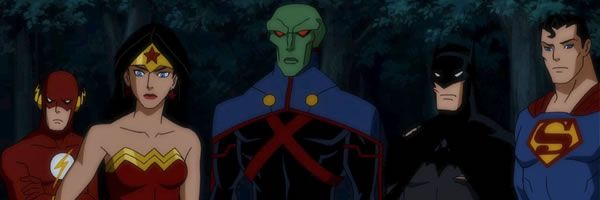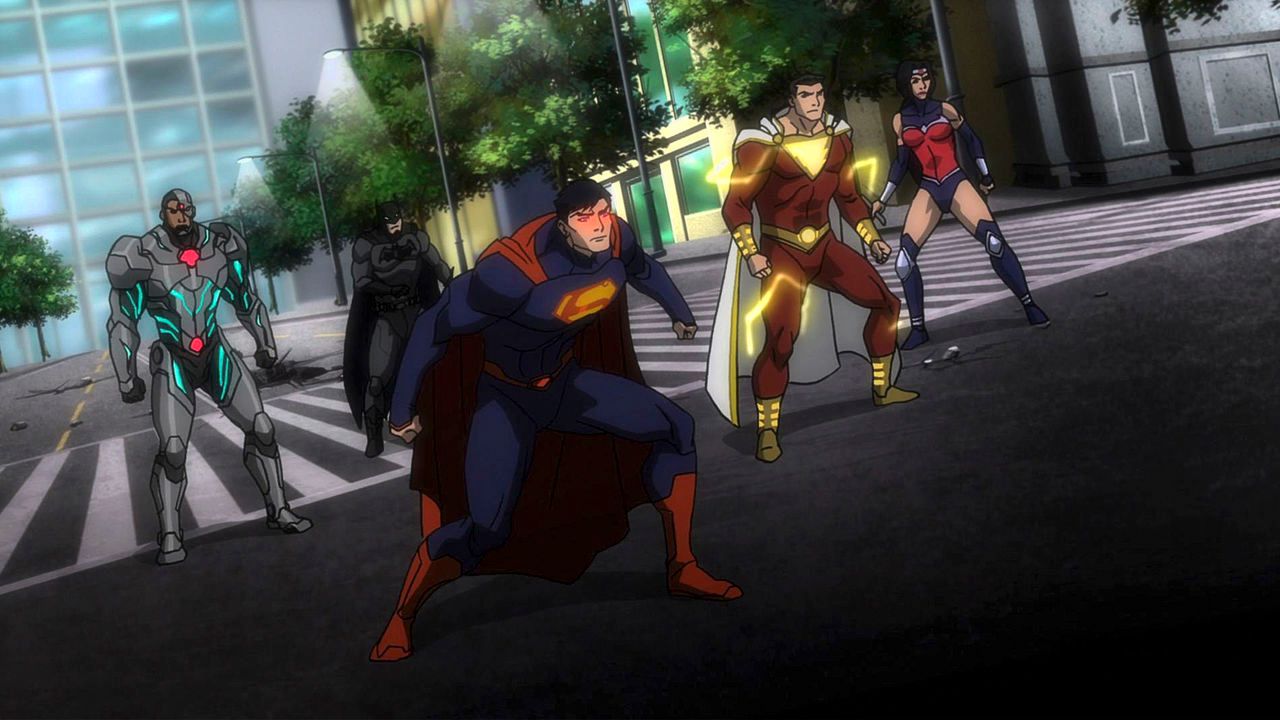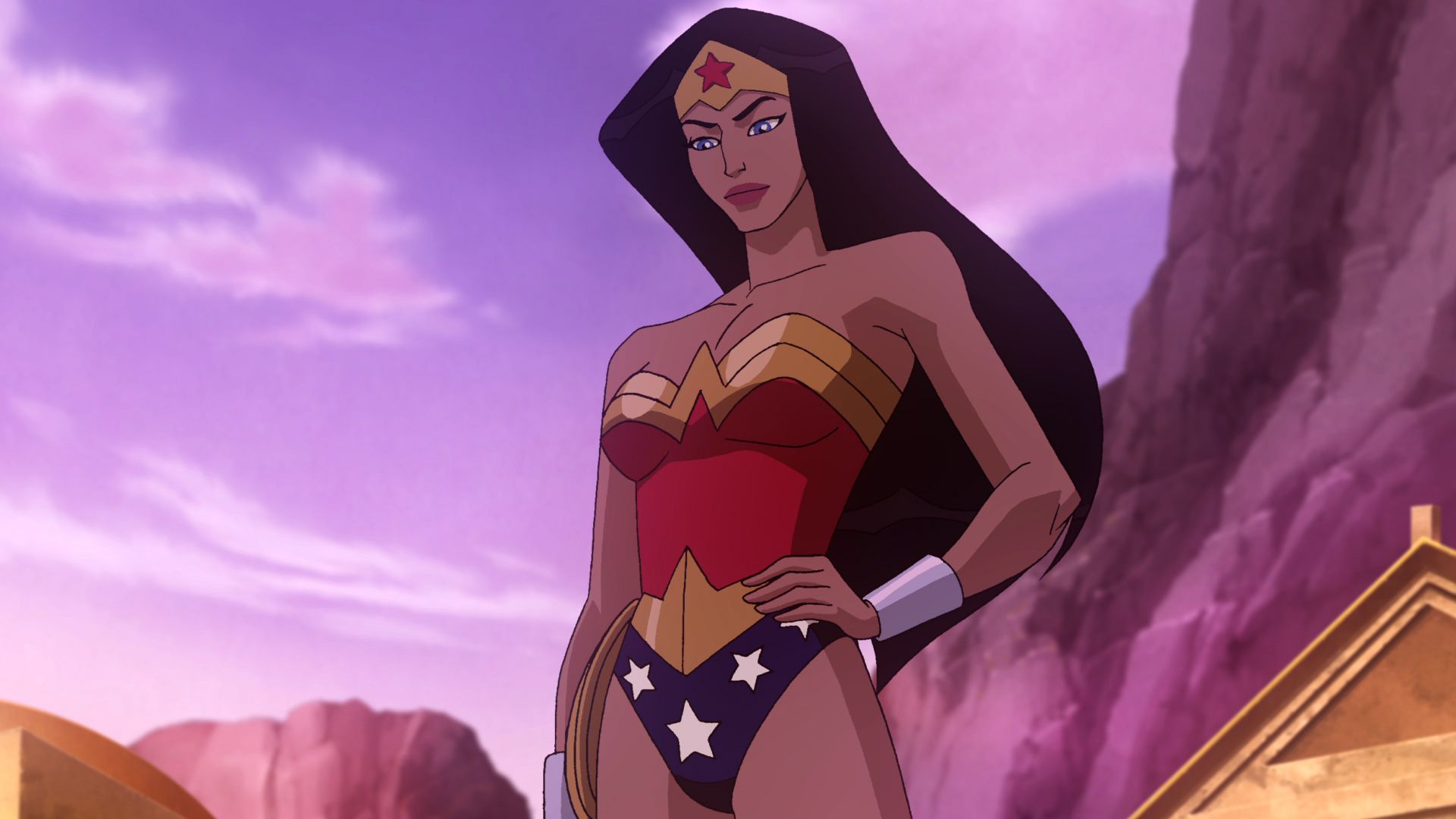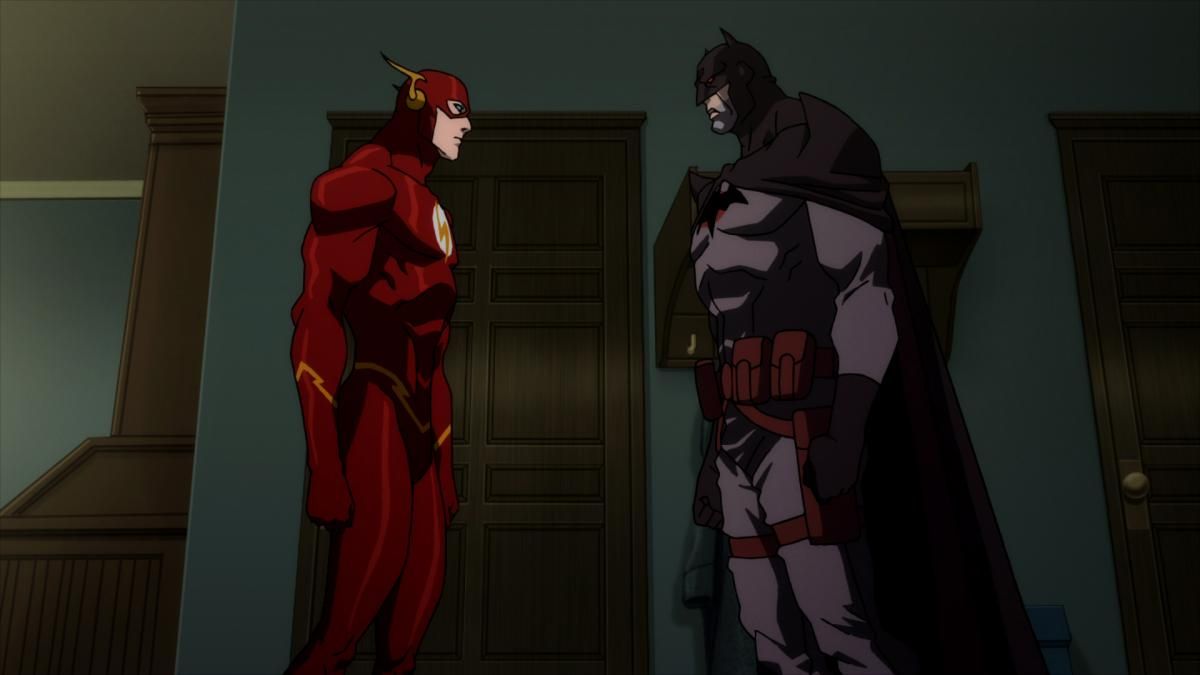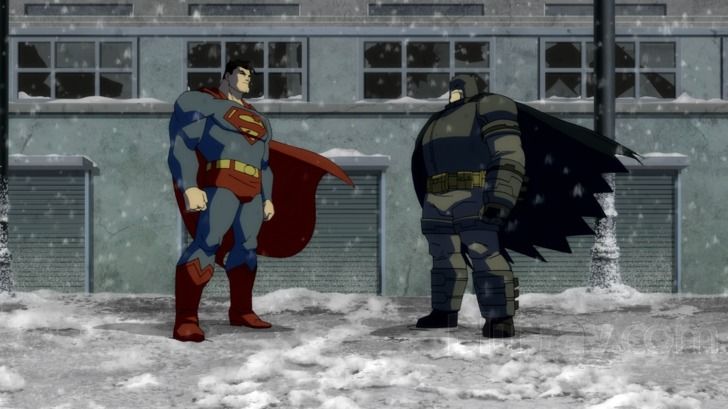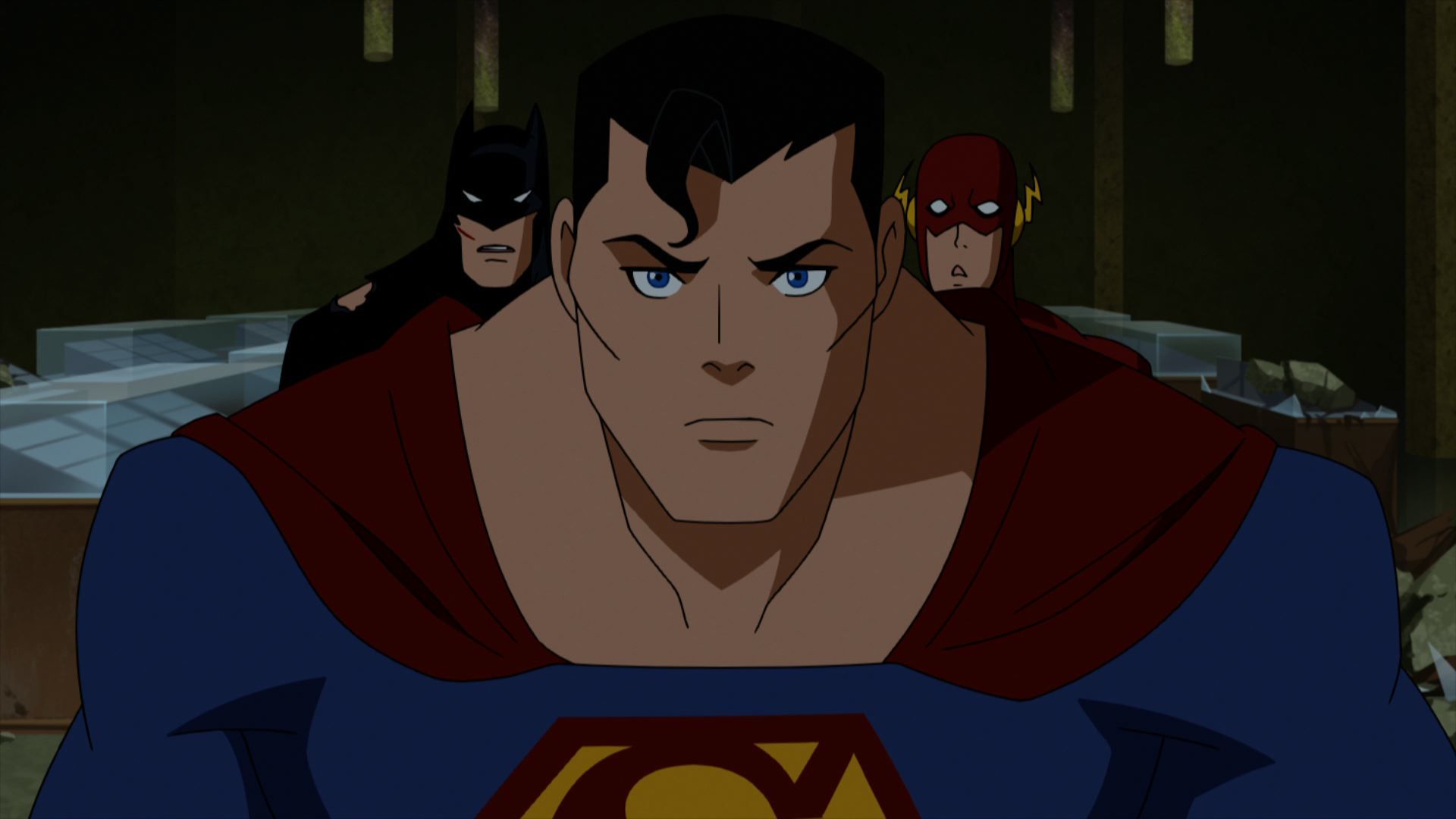A few years ago, the DC cinematic universe had a problem: Warner Bros. could not figure out how to assemble a Justice League movie. In 2013, Marvel Studios head honcho Kevin Feige advised the studio to “have confidence in the characters” and “believe in the source material.” Writer-producer Damon Lindelof essentially said the same thing:
What’s the tone of that movie? They’ve been struggling with launching their own tone. The tone of Green Lantern is very different from the tone of The Dark Knight. They clearly inhabit two entirely different worlds. You want to feel like someone is establishing a world where the Justice League can exist, maybe Man of Steel is that movie.
The writers and filmmakers on the animation side of DC know this better than most and found success by keeping their faith in the source material. Netflix started releasing more of these titles, like Justice League: War, The Flashpoint Paradox, and Son of Batman. When Young Justice producer Greg Weisman sounded a call to action for this niche fanbase, they answered and began devouring these offerings in the hope that Netflix would take notice and green light more DC animated content.
Cut to the live-action side, and Zack Snyder is still addressing backlash for choices made in Man of Steel. The reviews for Batman v Superman: Dawn of Justice were even harsher, putting the quality of the live-action Justice League, which Snyder is prepping to film this April, in doubt. The WB may still be in the beginnings of this world building, but the animation division has been setting an example that few have been following. Here are five of these films that can really help the DC cinematic universe find its place in the Golden Age of comic book movies.
Justice League: War
Where Justice League succeeds is in its diversity of characters. Superman is the Christ-like Kyrptonian figuring out his limitless power in a limited world; Wonder Woman deals with modern misogyny after numerous lifetimes on the all-female Themyscira; Batman channels his childhood trauma into a more brutal form of crime-fighting, and so on and so forth. How these deeply contrasting heroes react to one another and work together is where most of the entertainment arises.
Superman is a fixed point by which to craft the other characters. While Justice League: War from director Jay Oliva and writer Heath Corson isn’t without its faults, it illustrates this dynamic. Based on the New 52 Justice League comic, the film sees a professional Superman, one who sees conflict and throws himself in the thick of it knowing his nearly indestructible form can endure any blow. In the same breathe, he’s not afraid to crack a smile or flirt with Wonder Woman. His opposite is Batman, who always has a Plan C in case his first two strategies fall through. Diana, then, can serve as a middle ground and embrace the comedy of a culture-displaced warrior, someone who’s equally blown away by the taste of ice cream and the thrill of a good battle.
Where DC’s live-action universe is already at a disadvantage is in Man of Steel. Snyder made his Superman darker, dare I say grittier, and much holier than thou as he grapples with philosophical crises. Ben Affleck’s Batman — who, as Lex Luthor states in the film is the night to Superman’s day — becomes a much darker incarnation by comparison. Wonder Woman (Gal Gadot) was one of the better parts of Batman v Superman, because 1) it’s about time we finally see this character on the big screen; and 2) because she offered some other dynamic to the group that wasn’t so dark and brooding. She channeled Selena Kyle’s coyness in her dealings with Bruce Wayne, and launched herself into battle with a Xena battle cry. But even then, she was still bogged down by the serious tone of this cinematic universe. One can only hope Ezra Miller’s The Flash, Jason Momoa’s Aquaman, and Ray Fisher’s Cyborg bring something different in terms of personalities for Justice League.
Wonder Woman
Snyder may not be directing Wonder Woman, but as a creative mind for DC’s hefty film slate, he remarked in an interview that he’s strict with these characters, which already gives me worry when I see footage of Patty Jenkins’ film that dank and dreary.
We haven’t seen much from the film, but the DC universe is dark in the most literal sense, where even its day is more of a grey. Many critics have lambasted Man of Steel for its use of color (or lack there of), and it’s only become heightened as this year features the release of both Batman v Superman and Captain America: Civil War. Both deal with the repercussions of power and who should hold it, but the MCU embraces color in every aspect, including setting, costume, and comedy, while DC has kept its heroes under the cover of night — or, at the very least, a cloudy sky.
This sensibility already fights against the nature of Diana. Her animated film from 2009 is the story of how Queen Hippolyta molded Diana from clay and the gods gave her life. The princess trained from a young age to become a warrior on the vibrant Paradise Island, though she never lost her curiosity of the outside world, hope for mankind, or kind heart. When she earned her chance to step foot in man’s world, a harsher environment than her Grecian upbringing, her colorful armaments and glistening personality only made her brighter by contrast.
As Gadot’s Diana tells Bruce in Batman v Superman, “I don’t think you’ve ever met a woman like me.” None of us have. The world of a superheroine whose origin and abilities are rooted in Greek mythology is completely different from the shadowy streets of Gotham City to the crumbling Krypton. We’ve seen how a war-weary version of Wonder Woman fits into Snyder’s shadowy climate, but it’s difficult to imagine her origin story or a setting like Paradise Island that doesn’t live up to its name.
Justice League: The Flashpoint Paradox
The concept of a dark superhero movie can work, and it has worked in the past. Christopher Nolan was one who reignited this sub-genre with the Dark Knight trilogy, but nothing compares to the brutal world of The Flashpoint Paradox. The scarlet speedster went back in time to save his mom, inadvertently causing a ripple throughout the time stream. Events were shifted ever so slightly to envision a horrific reality in the present, one consumed by a war between the Amazons (led by Wonder Woman) and the Atlantians (led by Aquaman). It’s as dark as an animated superhero movie can get. Diana hangs Steve Trevor with her lasso of truth, guts the child form of Billy Batson, and decapitates Queen Mera.
These jaw-dropping moments were the equivalent of DC cashing in their chips. Flashpoint came out in 2013, after films like Justice League: Crisis on Two Earths (2010), Batman: Under the Red Hood (2010), and Justice League: The New Frontier (2008). It became a case of what came before, which was a bit more family friendly, paving the way for the unexpected. Flashpoint even begins with a brief mission for the team, showing how they are as heroes to further emphasize how dark their natures can become. In a sense this is what DC is doing with Batman v Superman. We’ve had enough Batman origin stories to last a lifetime, so even the most green audiences have a general understanding of Bruce Wayne. People similarly know the name Wonder Woman, allowing her to appear for the first time fully formed.
However, Nolan’s work still casts a shadow over the current DC landscape and the films that followed were just as serious. Audiences want something different from their superhero movies, as we’ve seen from the box office success of Deadpool, Guardians of the Galaxy, and the like. Flashpoint may have been dark, but it’s something different. It’s these superheroes stripped of their titles and down to base animal instincts. Chances are we’ll never see a live-action Aquaman rip open Cyborg’s chest to expose his beating heart or a live-action Batman fire a bullet through a villain’s bloodied brain. But even then it wouldn’t work unless we had something lighter in contrast, something that informs audiences how the Justice League acts as a team and individuals so this image can be shattered in glorious fashion.
Batman: The Dark Knight Returns
As the name implies, Batman v Superman: Dawn of Justice has a lot of material to cover: introduce Batman, follow up on events from Man of Steel, set up the face-off, and tease the events to come later in the DC universe. The film’s execution in this regard was lazy at best, plowing through the story and leaving little time to further evolve its pre-existing characters and develop its new ones. It was as if Snyder simply needed to get through this film in order to get to Justice League.
Batman: The Dark Knight Returns faced a similar problem with the same source material, Frank Millar’s The Dark Knight Returns. This animated iteration of Bruce Wayne is not the one we remember. He’s been trying to enjoy retirement in his older age, but he’s called back to action to face another threat to Gotham City. Doing so places him in the path of Superman. In a scene reminiscent to the wood-chopping moment between Cap and Iron Man in Avengers: Age of Ultron, Bruce suggests Clark is now the government’s lapdog, while the Kryptonian claims it’s necessary since Batman answers to no one.
The Dark Knight Returns split its material into two films: Part 1 is designated for Batman’s emergence from retirement, which prompts a rise in vigilante activity, while Part 2 introduces Superman and the clash of titans. Batman v Superman only adapts certain elements of Millar’s comic, but it blended all its events into one story. The result proved to be something as clunky and disjointed as it’s name, and places serious concerns on Snyder’s Justice League. If the writers had a difficult time managing the various elements in Batman v Superman, what hope do they have with the more complex task of crafting this superhero team-up?
No matter the events that circled Batman in the animated feature, audiences could always turn back to Bruce Wayne because, in the end, this movie was about him. Batman was the anchor. There wasn’t one in Batman v Superman. I only know why Lex Luthor was so consumed with taking down both heroes because of interviews with Jesse Eisenberg. I know why Bruce was haunted by his past heroics with Robin because of interviews with DC’s Geoff Johns. I wanted to feel the touching moments between Clark Kent and his mom and later between Clark and Lois, but the film skirted by these moments so quickly that there was not a single character I truly cared about by the end-credits. The Dark Knight Returns chose to show and not tell, while Batman v Superman chose to tell and not show.
Justice League: Doom
If Guardians of the Galaxy is a space opera, Ant-Man is a heist film, and The Winter Soldier is a political thriller, then one can argue Justice League is about a pantheon of gods. Superman is nearly indestructible with his Herculean strength, The Flash wields the speed of Hermes, and Batman is a Hades figure emerging from the underworld of Gotham City. But even gods have their weaknesses as was made clear in Justice League: Doom, a loose adaptation of the Tower of Babel comic.
The Legion of Doom, headed by Vandal Savage, uses Mirror Master to steal secret files from Batman containing plans for neutralizing all members of the League. One by one they fall and it’s left to Batman to end the horror he inadvertently unleashed. As the heroes confront Bruce about this seeming betrayal, he brings up a valid argument. Earth currently has no protection against these gods. Should Superman or Wonder Woman fall victim to mind control, which has happened in other stories, or suddenly have a change of heart, who could stand against their indomitable strength?
Stories like Doom prove this assemblage of beings is unlike any other. The Avengers are mostly earthbound heroes, while the League is mostly mythic. Not only are the humans of this world attempting to grasp their existence, but also their larger implications. Wonder Woman introduces the immortal Amazons into the world. Superman, Green Lantern, and Martian Manhunter are proof that we’re not alone in the universe. Other Leaguers not in Doom, like Aquaman and Shazam, prove our own planet isn’t as small as we thought.
Fans glimpsed what’s awaiting them after Batman v Superman from the Flash, Aquaman, and Cyborg cameos. Will the world have the same polarizing reaction to these meta-humans as they did with Superman? Will humanity embrace them in light of whatever conflict arises in Justice League: Part One? How will these heroes attempt to live in man’s world with such extraordinary abilities? These are question Snyder should be asking himself, but I have doubts based on Batman v Superman.
Amid the growing debate around Superman, there were many opportunities to exacerbate this conflict, which itself is interesting — Superman’s godlike abilities have drastic consequences for the world around him (e.g. the destruction of Metropolis), and who on Earth could stand against him if his interests conflict with humanity’s? There were opportunities to further explore this dilemma. For instance, the aftermath of the courtroom scene could’ve been painted as Superman’s retaliation against his dissenters and further taint public perception. Instead, the conflict, like most of the film, was diluted by everything else at play. If there’s one thing Snyder should take moving ahead in Justice League, it’s a firm grasp of who these heroes are, not just in the DC universe, but in the scheme of the superhero movie genre. Knowing this will force specificity and cut away elements that don’t best serve this story.

